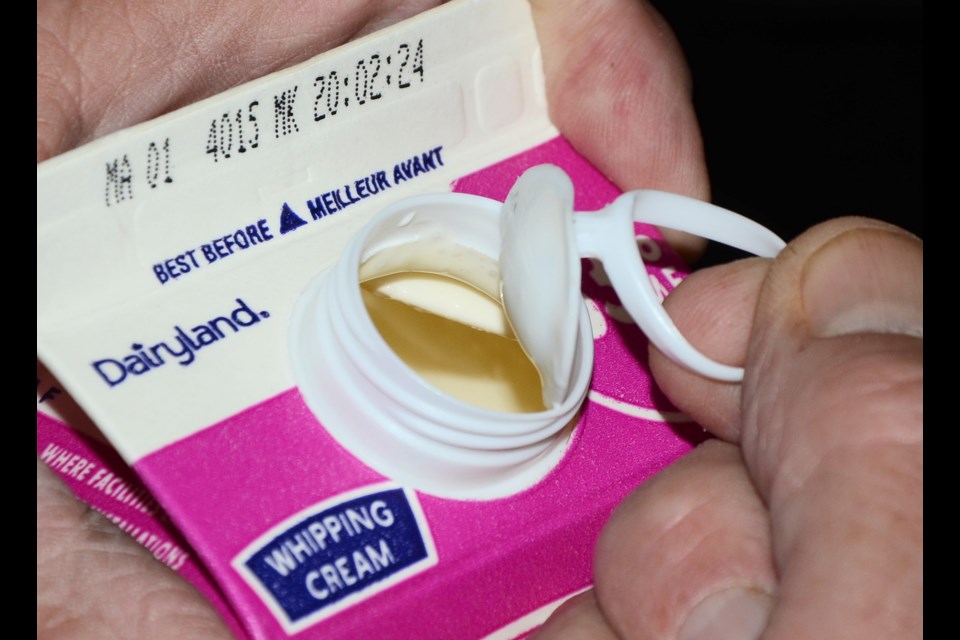Tru Earth, a company which manufactures small, flat strips of liquid-less laundry detergent, developed their product and company in an effort to cut down on the number of plastic laundry jugs thrown in landfills – 700 million a year in North America. In reading about their product, I came across the following question: “Why would you buy something that you’re going to use for a few minutes out of a material that’s basically going to last forever, and you’re just going to throw it away?”
That question immediately made me think of the new plastic spouts on pints and half-pints of cream (or litres, I guess). Since originally writing that sentence, I have become aware that the spouts have been added to virtually all dairy products, including milk, in each of the rectangular cartons which range from 250 millilitres to two litres in size.
For decades, we all have been successfully pushing open the formerly built-in spouts on these containers. I am completely baffled as to why, at a time when plastic pollution is taking over the planet, Dairyland would thus have added not one, not two, but three pieces of plastic to their containers. Each carton now has a plastic spout, a plastic plug and a plastic lid.
When first opening a carton, I suspect many people will simply find it easier to throw out the pull-out plug than to send it to recycling. I also suspect the addition of the plastic spout to the container will make the container itself more challenging to deal with, as milk cartons are usually sent to a paper mill to be used to make other products.
Did you know, and does Dairyland not know, that “Every molecule of plastic produced since 1907 is still present in the environment?” (science.howstuffworks.com)
Even plastic that has broken down due to UV rays from sunlight is still there, as plastic. It is simply in smaller and smaller pieces, ultimately so small the pieces are microscopic. But just because you can’t see it with the naked eye, doesn’t mean it isn’t still there.
Just to get to that microscopic stage can take from 450 to 1,000 years and some experts believe certain plastics will never decompose at all. Plastic bags break down sooner, but only under certain conditions. Thanks to UV light and constant motion, a plastic bag in the ocean will decompose in about 20 years. Buried in a landfill that same bag will still be here centuries from now.
As a society, we started recycling programs some years ago. One hope was that by recycling plastic and re-using the base materials, less new plastic would need to be created. The other motivator was to preserve landfill space.
Unfortunately, recycling does not work as well as we wish it would. Recycling plastic degrades its quality and it can only be re-used two to three times until it can no longer be made into new products. So eventually it will be thrown away anyway (which is not to say that we shouldn’t delay that end result as long as possible). In addition, in order to use recycled plastic, new virgin material is almost always added to upgrade the quality of the plastic.
As for biodegradable plastic, such as polylactic acid made from corn, it requires certain conditions to decompose. Buried in a landfill, a plastic bag made from PLA will probably remain intact just as long as a bag made from oil-based plastic.
Plastic garbage taking over the oceans is in the news. Climate change and the need to use less oil and oil-based products is in the news. Consumers are continually exhorted to reduce, reuse and recycle. How incredibly disappointing to find ourselves forced to use more plastic, not less, if we wish to support Canadian dairy farmers.
What was Dairyland thinking?!




